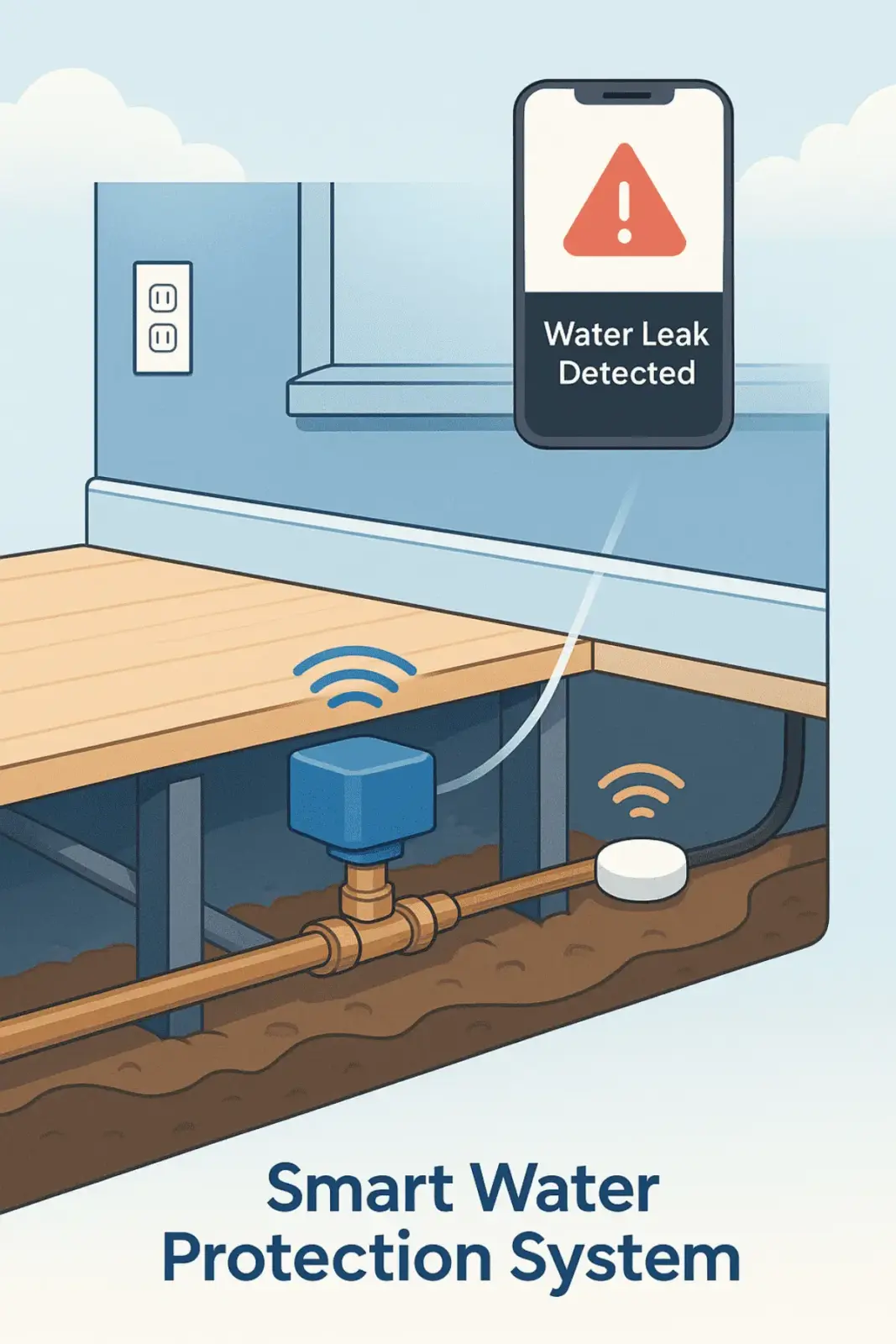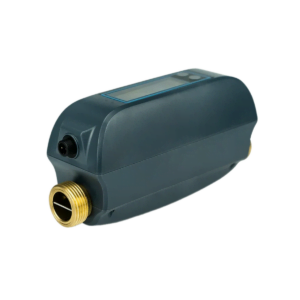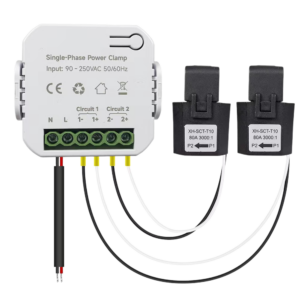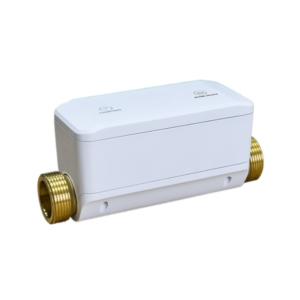Why Smart Water Protection Is Essential

Imagine coming home to find your floors soaked, your furniture damaged, and the smell of mold creeping in. Water leaks are among the most common and costly home disasters—yet they’re also among the most preventable.
According to the Insurance Information Institute, water damage and freezing accounted for nearly 30% of all homeowner insurance claims in the U.S. in recent years, with the average claim costing over $11,000. A burst pipe, a leaky water heater, or even a slowly dripping hose can cause massive damage over time.
This is where smart water protection devices come in. These intelligent systems can detect leaks, send alerts to your phone, and even shut off your water supply automatically—saving your home from disaster and your wallet from the fallout.
But not all smart water protection devices are created equal. Some focus purely on detection, others offer full shutoff automation. In this guide, we’ll compare the best smart water protection devices available in 2025, helping you decide which one fits your home, lifestyle, and budget best.
1. What Are Smart Water Protection Devices?
Smart water protection devices are designed to monitor, detect, and often prevent water leaks in real time. Typically, a complete system includes:
- Smart Leak Detectors: Sensors placed near potential leak points like water heaters, under sinks, or in basements.
- Smart Water Shutoff Valves: Installed directly on your main water line to stop water flow when a leak is detected. Not sure what makes a smart water valve different from regular valves? Here’s everything you need to know
- App Integration & Notifications: Most systems notify you via a mobile app and allow remote control and monitoring.
- Automation and AI: Some systems use AI algorithms to detect unusual water usage and predict potential leaks.
Use Case Example
- You’re on vacation when a pipe under your kitchen sink bursts.
- Your smart leak detector picks it up immediately.
- It triggers the smart shutoff valve, which stops the flow of water.
- You receive an instant notification on your phone.
- Instead of thousands in damage, it’s a quick fix when you get home.
2. Comparison Criteria: What Matters Most?
When evaluating smart water protection devices, consider the following:
| Feature | Description |
|---|---|
| Shutoff Capability | Can the device automatically shut off water to prevent further damage? |
| Sensor Range & Number | How many sensors are included, and what area do they cover? |
| Smart Home Integration | Does it work with Google Home, Alexa, SmartThings, etc.? |
| Mobile App Functionality | Is the app intuitive, and does it support remote control/alerts? |
| Power Backup | Does the device operate during a power outage? |
| Installation Difficulty | Is it DIY-friendly or does it require a plumber? |
| Price-to-Performance Ratio | Does the system justify its cost with value-added features? |
These benchmarks help you compare solutions whether you’re a DIY homeowner or a smart home enthusiast.
3. The Contenders: 5 Top Devices in 2025
Let’s look at five top contenders in the smart water protection space:
Grus.io AquaNet Series
Products Link: here
Strengths:
- Modular system with smart shutoff valves + water leak detectors.
- Compatible with Grus App for seamless control and notifications.
- WiFi direct communication — no hub needed.
- Ideal for homeowners wanting a flexible, expandable solution.
- Currently can integrated with third-party smart home platforms (paired with API bridge).
4. Feature Comparison: Best Smart Water Protection Devices in 2025
Below is a comparison of five top devices, including Grus.io’s AquaNet series:
| Feature | Grus AquaNet Series | Flo by Moen | Phyn Plus Gen 2 | Guardian Leak System | Honeywell Lyric Detector |
|---|---|---|---|---|---|
| Automatic Shutoff | ✅ Yes | ✅ Yes | ✅ Yes | ✅ Yes | ❌ No |
| Wi-Fi Connectivity | ✅ Built-in | ✅ Built-in | ✅ Built-in | ❌ Hub Required | ✅ Built-in |
| Mobile App | ✅ Grus App | ✅ Moen App | ✅ Phyn App | ✅ iOS & Android | ✅ Honeywell Home App |
| Smart Home Integration | ❌ (Custom API Available) | ✅ Alexa, Google | ✅ Alexa, Google | ❌ Limited | ✅ Alexa |
| Power Backup | ✅ Battery + Manual Valve | ❌ None | ✅ UPS Compatible | ✅ Battery Included | ✅ Battery |
| Sensor Expansion | ✅ Yes, up to 10+ Sensors | ❌ None | ❌ Built-in Only | ✅ Yes (multiple zones) | ✅ Yes |
| Installation Difficulty | 🛠️ DIY or Plumber | 🛠️ Requires Plumber | 🛠️ Requires Plumber | ✅ Easy DIY | ✅ Plug-and-Play |
| Price Range (USD) | 120 – 350 | $500+ | $600+ | 250 – 300 | 80 – 120 |
Key Takeaways:
- Best Value: Grus AquaNet offers affordability with flexibility.
- Most Integrated: Flo and Phyn shine with Alexa/Google compatibility.
- Easiest Setup: Guardian and Honeywell win for hassle-free installs.
5. Choosing the Right Smart Water Device for Your Home
Smart water protection isn’t one-size-fits-all. Your ideal solution depends on your home’s layout, plumbing complexity, and smart home ecosystem.
🏠 Scenario 1: Standard Homeowner with Basic Needs
- Challenge: Wants alerts, but not ready for major plumbing modifications.
- Recommendation: Honeywell Lyric or Grus AquaNet leak detectors without shutoff functionality.
🧰 Scenario 2: Proactive Smart Home User
- Challenge: Already has Alexa or Google Home setup.
- Recommendation: Flo by Moen or Phyn Plus—great integrations, though costly.
🧱 Scenario 3: Older Homes or High-Risk Zones (e.g. basements, aging pipes)
- Challenge: Multiple leak-prone areas and no water shutoff automation.
- Recommendation: Grus AquaNet or Guardian—expandable sensor networks and shutoff.
🔋 Scenario 4: Power Outage Vulnerability
- Challenge: Region with frequent blackouts.
- Recommendation: Grus AquaNet or Guardian with backup battery options.
6. Why Grus.io Makes Sense for Most Homeowners
Grus.io’s AquaNet series stands out for several reasons:
- Affordable entry price, making it accessible for most homeowners.
- DIY-friendly with intuitive mobile control via Grus App.
- Sensor expansion, letting users scale coverage to fit any home size.
- Automatic shutoff valves for true protection, not just alerts.
- Ideal integration with Grus.io’s broader energy and water management ecosystem.
The AquaNet series is designed with real-life water risk in mind—not just tech flash. From under-sink leaks to basement flooding, you’ll be prepared.
7. How to Install a Smart Water Leak Protection System
Whether you choose a simple sensor or a full shutoff valve system, installation plays a critical role in performance. Below are typical steps for setting up a Grus AquaNet Smart Water Protection System, which also applies to similar devices:
🔧 Step-by-Step Installation Guide
- Choose Strategic Locations:
- Near water heaters, under sinks, in basements, and around appliances like dishwashers or washing machines.
- Install the Leak Sensors:
- Place flat on the floor where water would pool first.
- For multi-point coverage, use extension cables or additional sensors (Grus supports up to 10).
- Attach the Automatic Shutoff Valve:
- Install on your main water supply line (typically ¾” or 1” copper or PEX pipe).
- Use a wrench or engage a licensed plumber if uncomfortable with plumbing.
- Connect to Wi-Fi & Pair with Grus App:
- Follow on-screen setup instructions.
- Configure automation: for example, auto shutoff when sensor detects water.
- Test the System:
- Simulate a leak using a small amount of water near a sensor.
- Confirm that alerts, app notifications, and valve shutoff all work.
8. Visual Installation Flowchart
Here’s a Mermaid flowchart representing a typical Grus AquaNet system integration:
flowchart TD A["Start Installation"]:::start --> B{"Do you have a<br/>manual shutoff valve?"}:::decision B -- Yes --> C["Install Leak Detectors<br/>(Grus AquaNet-WD) only"]:::hardware B -- No --> D["Install Smart Shutoff Valve<br/>(Grus AquaNet-VS)"]:::hardware D --> E["Connect Leak Sensors<br/>to Valve System"]:::hardware C --> F["Download Grus App"]:::software E --> F F --> G["Pair Devices & Configure Automations"]:::software G --> H["Test Leak Simulation"]:::test H --> I["System Ready & Monitoring"]:::ready %% 样式定义 classDef start fill:#42a5f5,stroke:#1565c0,stroke-width:2px,color:#fff,rounded:8px classDef decision fill:#ffe082,stroke:#fbc02d,stroke-width:2px,color:#6d4c00,rounded:8px classDef hardware fill:#aed581,stroke:#558b2f,stroke-width:2px,color:#33691e,rounded:8px classDef software fill:#ce93d8,stroke:#6a1b9a,stroke-width:2px,color:#fff,rounded:8px classDef test fill:#ffb74d,stroke:#f57c00,stroke-width:2px,color:#fff,rounded:8px classDef ready fill:#90caf9,stroke:#1565c0,stroke-width:2px,color:#1565c0,rounded:8px
Smart Water Protection System Installation Flow
9. Common Questions and Answers (FAQ)
❓ Can I install the system myself?
Yes! Grus AquaNet leak detectors are DIY-friendly. Shutoff valves may require a plumber if you’re not experienced with pipework.
❓ Will it work during a power outage?
Yes—Grus AquaNet includes battery backup options. Shutoff still functions in emergencies.
❓ How many sensors do I need?
Most homes use 3–6 sensors depending on water points. Grus.io systems allow up to 10+ for complete coverage.
❓ Can I use it without Wi-Fi?
Basic sensor alerts will work locally (e.g., buzzer), but app-based alerts and automations require Wi-Fi.
10. Final Thoughts: Choose Wisely, Protect Intelligently
Whether you’re looking for the best smart water protection device for your new home or adding safety to your aging plumbing, it pays to be proactive. Consider:
- Device expandability: Will it grow with your needs?
- Automatic shutoff: Does it stop damage or just alert you?
- Integration: Does it work with your current smart system?
- Ease of use: Is setup and monitoring intuitive?
With Grus.io’s AquaNet series, you’re not just buying hardware — you’re investing in peace of mind.
🚰 Don’t wait until water damage happens. Explore our smart home water protection system to explore the AquaNet series and get started with a smarter, safer home.



